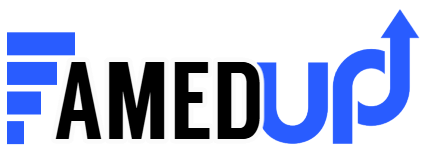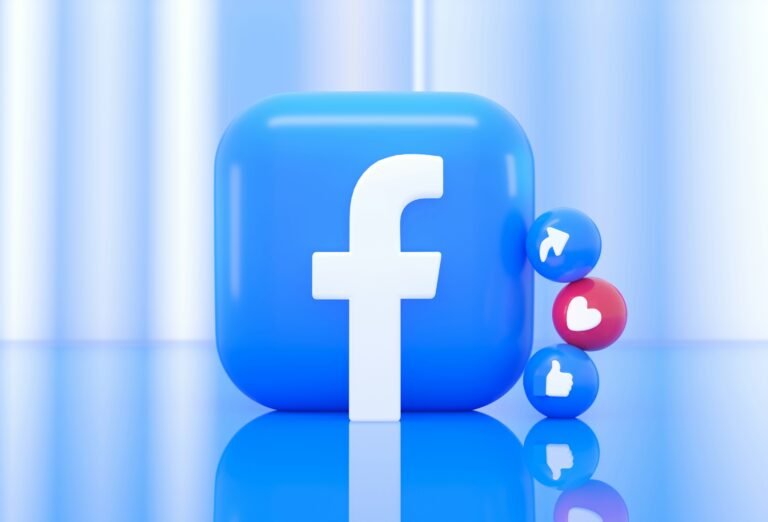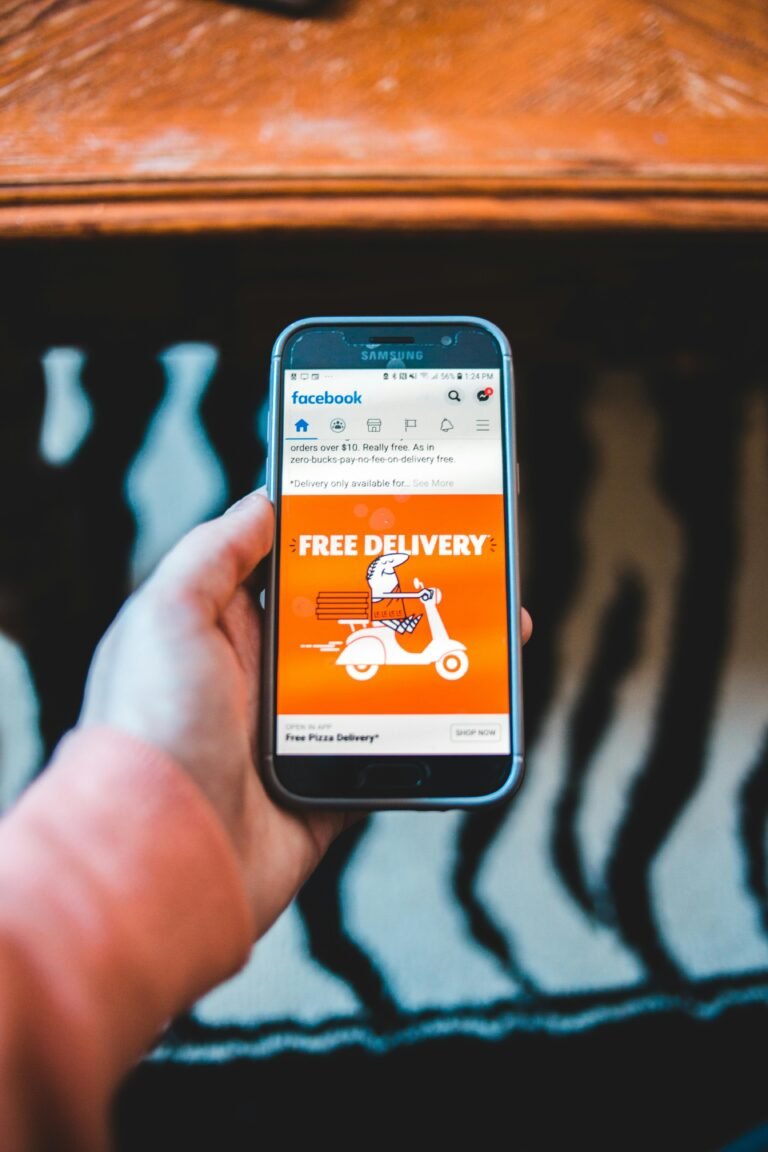1. Understand Your Audience First
Before you can turn Facebook fans into customers, you need to understand who they are, what they want, and how they interact with your brand on Facebook. The better you understand your audience, the easier it becomes to create content and offers that actually convert.
▪️ Why Audience Insight is Key
Not all Facebook fans are potential buyers—but many are. The key is identifying which ones are just scrolling and which are truly interested in your product or service. When you understand their age, location, interests, and behaviors, you can tailor your messaging to speak directly to them.
Example: A 25-year-old fashion enthusiast will respond to content differently than a 45-year-old business owner looking for software tools.

▪️ Tools to Analyze Your Facebook Audience
Facebook provides built-in tools that give powerful insights:
- Meta Business Suite Insights: See detailed metrics like age, gender, location, and the times your audience is most active.
- Facebook Page Analytics: Understand post reach, engagement rate, and who is interacting with your content.
- Facebook Audience Manager (Ads Manager): Great for creating custom or lookalike audiences based on your fanbase.
These tools help you move from guessing to knowing.
▪️ Segmenting Fans Based on Behavior
Not every fan is at the same stage of the customer journey. Try segmenting your audience into groups like:
- New followers: Introduce them to your brand story.
- Highly engaged users: Send them exclusive offers or early access to products.
- Inactive fans: Use retargeting ads or polls to re-engage them.
You can use custom audiences or Facebook Groups to tailor your communication based on these behaviors. This personal touch increases your chances of turning casual fans into paying customers.
2. Create Content That Solves Problems
Your Facebook fans won’t become customers just because they like your page—they need a reason to trust and buy from you. One of the most effective ways to build that trust is by creating content that solves their problems, answers their questions, or adds value to their lives.
▪️ From Entertaining to Useful: Content That Converts
Entertaining content may get likes and shares, but useful content drives action. Focus on what your target audience struggles with and position your product or service as the solution.
Examples:
- A skincare brand can post tips like “How to Treat Oily Skin in Summer” featuring their products.
- A fitness coach might share “5 Quick Workouts You Can Do at Home”—and promote a paid course at the end.
By showing that you understand your audience’s needs, you increase the chance they’ll see your business as the answer.
▪️ Product Demos, Tutorials, and How-Tos
Show, don’t just tell.
Create video tutorials, Facebook Lives, or carousel posts that demonstrate how your product works and how it helps solve specific problems.
Why it works: Visual content builds trust faster, especially when people can see the benefits before buying.
Tips:
- Keep videos short and engaging.
- Use captions for viewers who watch with sound off.
- End every piece of content with a soft CTA like “Learn more” or “DM us for details.”
▪️ Using Testimonials and Case Studies in Posts
Social proof is a powerful conversion tool. Post screenshots of happy customer messages, before-and-after results, or short client stories.
Examples:
- A real estate page could post: “John sold his house in 5 days with our help—see how we did it.”
- A digital product seller might show: “Maria grew her Instagram by 10K in 2 weeks using our guide!”
You can even tag or mention customers (with permission) to boost authenticity and reach.
3. Use Clear and Strategic Calls-to-Action (CTAs)
Even the most engaging content won’t lead to sales if your audience doesn’t know what to do next. That’s where a strong call-to-action (CTA) comes in. It guides your fans toward taking the next step—whether that’s visiting your website, messaging you, or making a purchase.
▪️ What Makes a Good CTA on Facebook
A good CTA is simple, specific, and action-driven. It should tell users exactly what they’ll get and what to do next.
Examples of high-converting CTAs:
- “Shop Now and Get 10% Off”
- “Message Us to Claim Your Free Trial”
- “Comment ‘YES’ and We’ll DM You the Details”
- “Click the Link in Bio to Book Your Spot”
Avoid vague language like “Check this out” or “Click here”—instead, make your value clear and direct.
▪️ Examples: “Shop Now,” “Learn More,” “DM Us for a Deal”
Facebook offers built-in CTA buttons on posts and pages, such as:
- Shop Now: Great for ecommerce products.
- Send Message: Ideal for businesses selling via DMs.
- Learn More: Perfect for blog articles, service pages, or landing pages.
Use them consistently on both organic posts and ads to create a familiar path for fans to follow.
Pro Tip: Pair a CTA with urgency (e.g., “Only 3 spots left!” or “Offer ends tonight!”) to drive immediate action.
▪️ Don’t Sell in Every Post—Balance Content and Promotions
If every post sounds like a sales pitch, you’ll lose your audience’s interest. Use the 80/20 rule:
- 80% of your content should educate, entertain, or inspire.
- 20% should be promotional.
This keeps your fans engaged while still giving them opportunities to buy.
4. Leverage Facebook Shops and Product Tagging
If you’re not using Facebook Shops yet, you’re missing a huge opportunity to turn fans into buyers right on the platform. Facebook Shops lets you create a mobile-friendly storefront where customers can browse and purchase without ever leaving Facebook.
▪️ How to Set Up a Facebook Shop
Setting up a Facebook Shop is easy and free. You can add your product catalog, create collections, and customize your storefront to match your brand.
Steps to get started:
- Go to your Meta Business Suite.
- Click on Commerce Manager.
- Add your product catalog manually or connect it from platforms like Shopify or WooCommerce.
- Set up checkout options (on Facebook, on your website, or via messaging).
Once set up, your fans can browse your products directly from your Facebook Page.
▪️ Tag Products in Posts to Streamline the Purchase Journey
One of the most powerful features is product tagging. You can tag specific products in your photos, videos, and even Stories.
Example:
Posting a lifestyle photo of someone wearing your product? Tag that product directly in the post so fans can click and buy immediately.
Why it works:
It removes friction—fans don’t have to ask, “Where can I buy this?” because the answer is already one click away.
▪️ Linking Your Catalog to Instagram Too (Cross-Promotion)
If you also use Instagram, you can connect your product catalog across both platforms to increase reach and consistency.
Benefits:
- Shoppable Instagram posts and reels.
- Unified shopping experience across Facebook and Instagram.
- Easier management of inventory and ads in one place.
Cross-platform selling helps you tap into different behaviors—some users prefer browsing on Facebook, while others shop more on Instagram.
5. Build Trust with Social Proof
People are more likely to buy when they see that others already trust and love your brand. That’s the power of social proof. On Facebook, it comes in many forms—comments, reviews, shares, testimonials, and even engagement metrics like likes and views.
▪️ Why Reviews and Comments Matter
When potential customers visit your Facebook Page, one of the first things they check is your reviews and post engagement. A page with active comments and positive feedback instantly appears more trustworthy.
What you can do:
- Encourage happy customers to leave a review.
- Pin positive comments to the top of posts.
- Reply to comments publicly to show you’re engaged and reliable.
Tip: Responding professionally to even negative feedback builds trust with others watching.
▪️ Showcase Customer Testimonials or User-Generated Content
Turn your happy customers into brand ambassadors by sharing their experiences.
This can include:
- Screenshots of DMs or emails (with permission).
- Video testimonials.
- Photos of customers using your product.
Why it works: It creates authenticity. People trust other people more than they trust ads.
Example Post Idea:
“Thanks to @jane_doe for sharing how our planner helped her stay productive all month! 💪 #CustomerLove #ProductivityHack”
▪️ Encourage Check-ins and Shares
Want more organic reach and credibility? Ask your customers to:
- Check in at your business.
- Share their purchase or experience on their own profile.
- Tag your page in their posts or stories.
Incentivize this with small rewards like discounts, shoutouts, or entry into a giveaway. When your fans become your promoters, you reach more people without spending a dime on ads.
6. Use Facebook Ads to Retarget Warm Leads
Not every fan will buy the first time they see your offer—and that’s okay. This is where retargeting comes in. Facebook Ads allow you to re-engage users who have already interacted with your page, posts, or website, giving you a second (and third) chance to convert them into paying customers.
▪️ Retargeting 101: What It Is and Why It Works
Retargeting is the process of showing ads specifically to people who’ve already shown interest in your business—like visiting your page, watching a video, or clicking a product.
Why it works:
These users are already “warm”—they know your brand and are more likely to buy than cold audiences who are seeing you for the first time.
Examples of retargeting audiences:
- People who engaged with your Facebook Page in the last 30 days
- Visitors to a specific product page on your website
- Video viewers who watched 50% or more of your ad or tutorial
▪️ Setting Up a Custom Audience from Your Page Fans
Here’s how to build a retargeting audience in Facebook Ads Manager:
- Go to Audiences and click Create Audience > Custom Audience
- Choose Facebook Page as the source
- Select an engagement type (e.g., people who messaged your page or saved a post)
- Define the time frame (e.g., last 30 days)
- Name and save the audience for future campaigns
You can now create ads targeted directly to these people—meaning better relevance and higher conversion rates.
▪️ Ad Types That Work Best for Conversions
When running retargeting ads, keep your messaging focused and personalized. Some of the most effective ad types include:
- Carousel Ads: Showcase multiple products or features
- Video Ads: Reintroduce your brand or product benefits
- Offer Ads: Include discounts or time-limited deals
- DM Ads (Click-to-Message): Encourage direct communication for quicker conversions
Pro Tip: Add social proof and urgency to your ad copy:
“Over 500 customers love this—get yours before it’s gone!”
7. Offer Exclusive Deals for Fans
Everyone loves a good deal—but your Facebook fans deserve something even better. Offering exclusive discounts and promotions not only builds loyalty but also encourages immediate action from people already following your page.
▪️ Time-Sensitive Promotions
Create a sense of urgency with limited-time offers that are only available to your Facebook audience.
Examples:
- “Flash Sale: 24 Hours Only – 20% Off for Facebook Fans!”
- “This Weekend Only: Free Shipping When You Order via Our Facebook Page”
Urgency drives action. Make sure your CTAs match—use phrases like “Buy Now,” “Ends Soon,” or “Claim Offer.”
Tip: Use Facebook’s native Offer Posts feature to promote discounts and allow fans to save them directly to their profile.
▪️ Giveaways and Contests to Drive Action
Running a Facebook giveaway is a great way to engage fans while promoting your products.
Example Contest Idea:
“Tag a friend and comment your favorite product from our shop to win a $50 gift card!”
Benefits:
- Boosts engagement.
- Expands your organic reach.
- Attracts potential buyers in the form of new fans.
Just ensure you follow Facebook’s contest rules (e.g., no requirement to share to personal timelines).
▪️ Create a VIP Group or Messenger Bot Flow for Loyal Fans
Go a step further by rewarding your most loyal fans:
- Create a private Facebook Group for customers or repeat buyers. Share insider news, early product drops, and private discounts.
- Use Messenger automation tools (like ManyChat) to send exclusive deals via DM. Fans can type a keyword like “DEAL” in comments to receive offers automatically.
This kind of personalized experience keeps fans engaged and makes them feel valued—which increases the likelihood they’ll buy again and again.
8. Track Conversions and Improve
Once you’ve started implementing strategies to turn fans into buyers, the next step is crucial: measure your results. Tracking conversions helps you understand what’s working, what’s not, and how to optimize for better performance.
▪️ Using Meta Pixel to Track Conversions
The Meta Pixel (formerly Facebook Pixel) is a small piece of code you install on your website. It helps Facebook track actions users take after clicking your ads or visiting your page.
What it can track:
- Page views
- Add to cart actions
- Purchases
- Leads or sign-ups
Why it matters: You can see which campaigns lead to real sales—not just clicks or likes—and optimize your ads for conversion.
▪️ Key Metrics to Watch: CTR, Conversion Rate, ROAS
Understanding your data gives you power. Focus on these key metrics:
- Click-Through Rate (CTR): Shows how many people clicked your post or ad after seeing it. Higher CTR = more engaging content.
- Conversion Rate: The % of users who completed your desired action (purchase, sign-up, etc.).
- Return on Ad Spend (ROAS): Measures how much revenue you earned for every dollar spent on ads.
Use Facebook Ads Manager and Google Analytics (if connected) to gather these insights.
▪️ A/B Test Your Content and Ads
Don’t guess—test. A/B testing (also known as split testing) helps you compare two versions of an ad or post to see which performs better.
You can test:
- Headlines or captions
- Images or videos
- CTA buttons
- Target audiences
Run both versions for a few days, then scale the winner.
Pro Tip: Test one element at a time so you know exactly what made the difference.
✅ Final Thoughts
Turning Facebook fans into paying customers takes a strategic mix of content, engagement, and tracking. You don’t need to be a marketing expert—you just need to understand your audience, deliver real value, and guide them toward action with intention.
📣 Need help growing and monetizing your Facebook presence? Explore our affordable Social Media Marketing (SMM) services today and let us help you scale smarter.
Read Also; Facebook Followers vs Likes: What’s More Important for Growth?



